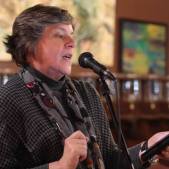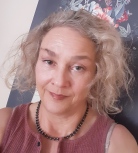
A Phone Call
by Anne Born
I remember the hushed phone call.
My study-abroad daughter calling me in New York
From Gallery 12 at the Prado Museum in Madrid.
Mom. There’s a tour guide here.
He’s very proud.
He’s telling people that this painting here
Is the greatest painting in the world,
By the greatest artist in the world.
Is it?
And that this museum is
The greatest museum on the world.
Is it?
I thought for a moment.
Yes.
That painting, Velázquez’s Las Meninas.
It is absolutely the greatest painting in the world.
What about the museum?
Am I in the greatest museum in the world?
I thought for a moment.
Yes.
I have been to the Louvre, the Met, the Art Institute,
All of the Smithsonian, the British Museum, the Uffizi.
Yes.
It is the greatest museum in the world.
Thanks, mom.
I love you.
I love you too.
My sweet girl had picked up and gone
To an art museum,
And she was standing in front of the greatest painting by the greatest artist in the greatest museum in the world
And she thought to call me.
That’s what I remember.
PAINTING: Las Meninas by Diego Velázquez (1656), Museo del Prado, Madrid, Spain.

NOTE FROM THE AUTHOR: Memory is a funny thing. Sometimes it’s the small details you think about and not the event itself. You should think about the time you went to Paris or Rome and saw cathedrals and cafes and galleries, but all you think about is that you ran out of toothpaste, got on the wrong train, or brought the wrong shoes. Here, the call did force me to assess what I knew about museums and paintings and artists, but the real story to me was that, in the moment, she wanted to know what I thought too. It’s a marvelous thing when your children experience the places you love.
AUTHOR’S PHOTO CAPTION: I took this photo at the Prado — when the guard wasn’t looking. I love watching people take in the art. (Gallery 12, Museo del Prado, Madrid, Spain. Photo credit: Anne Born, August 17, 2022.)

ABOUT THE AUTHOR: Anne Born is an award-winning author and photographer based in Michigan. A published poet, essayist, and travel writer, she is currently collaborating on a short documentary film about her book on one of the great cathedrals in Spain, If You Stand Here: A Pilgrim’s Tour of the Cathedral of Santiago de Compostela. Her photographs of the Camino de Santiago and views of New York are available on Redbubble (@nilesite), and her books can be ordered from Amazon, or your favorite independent bookseller.



















